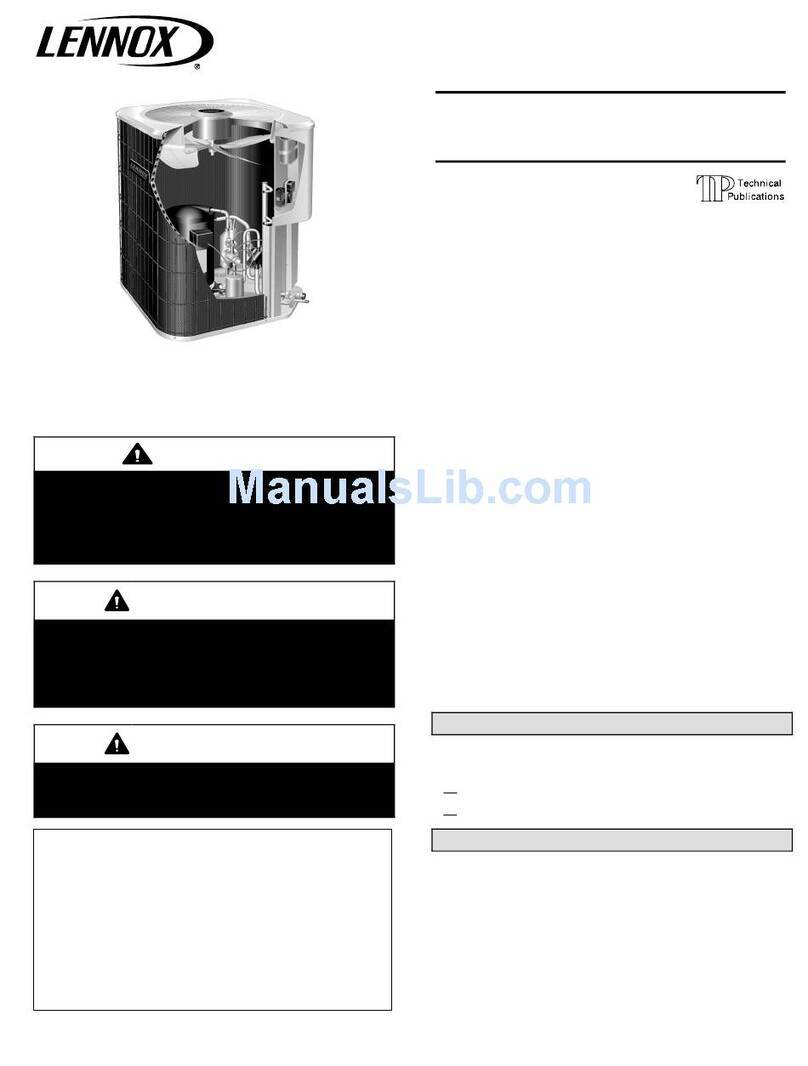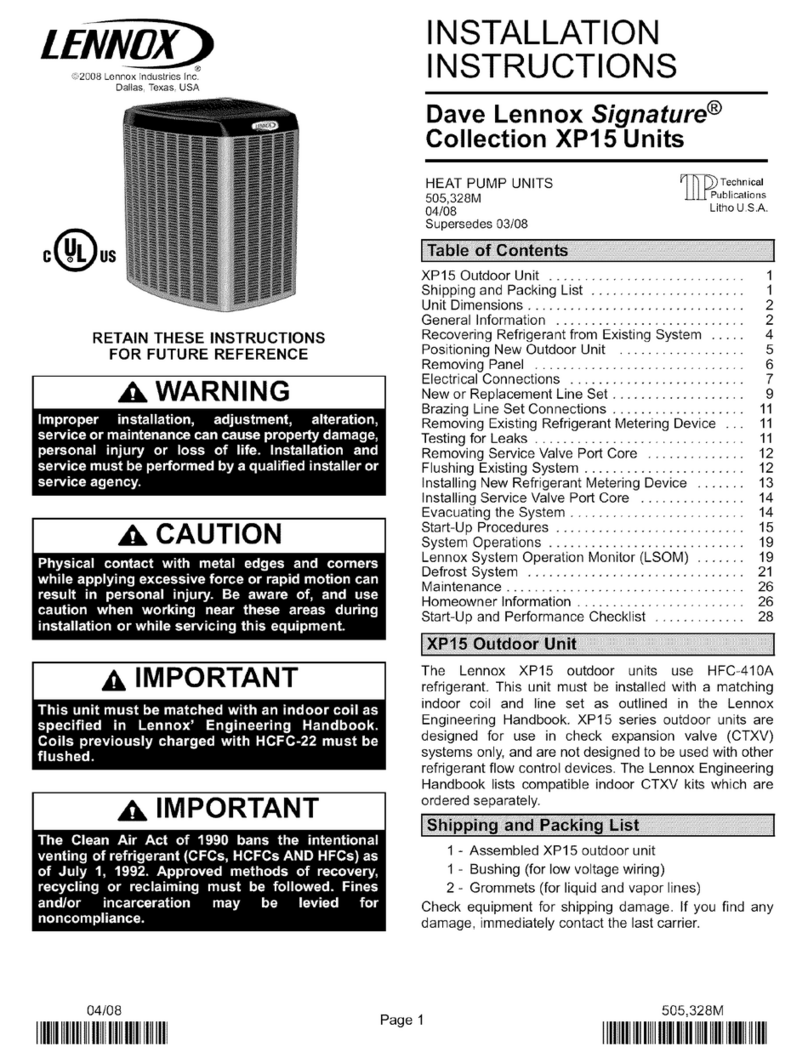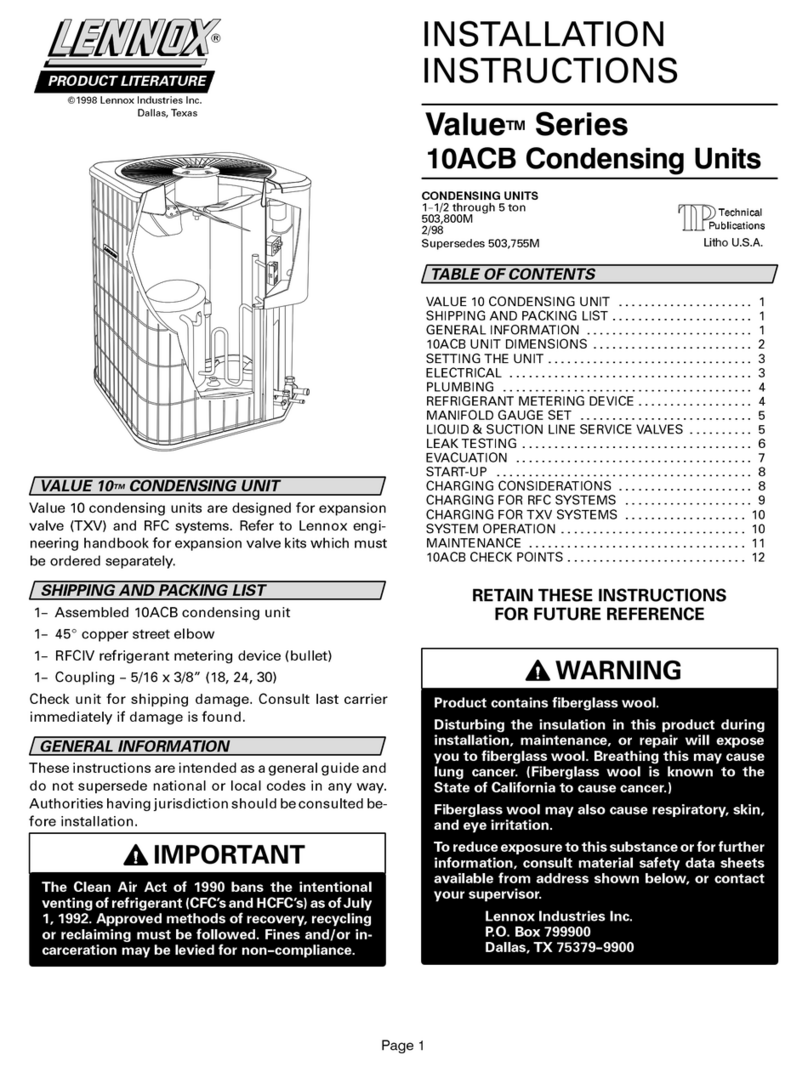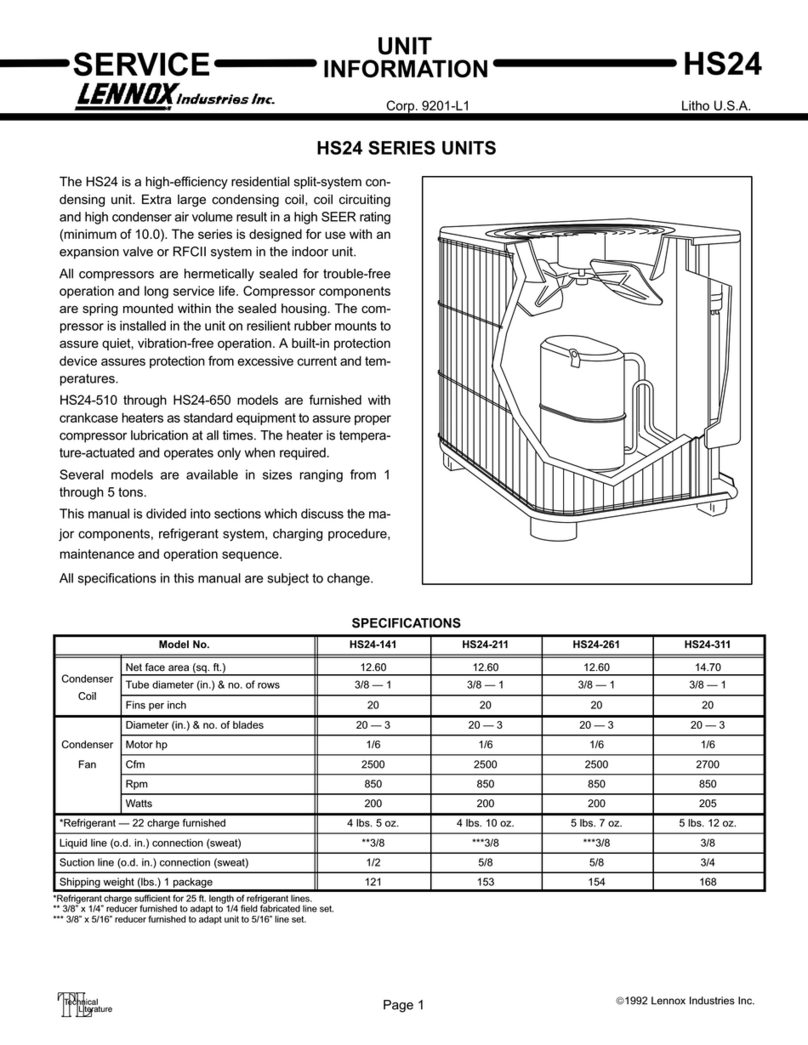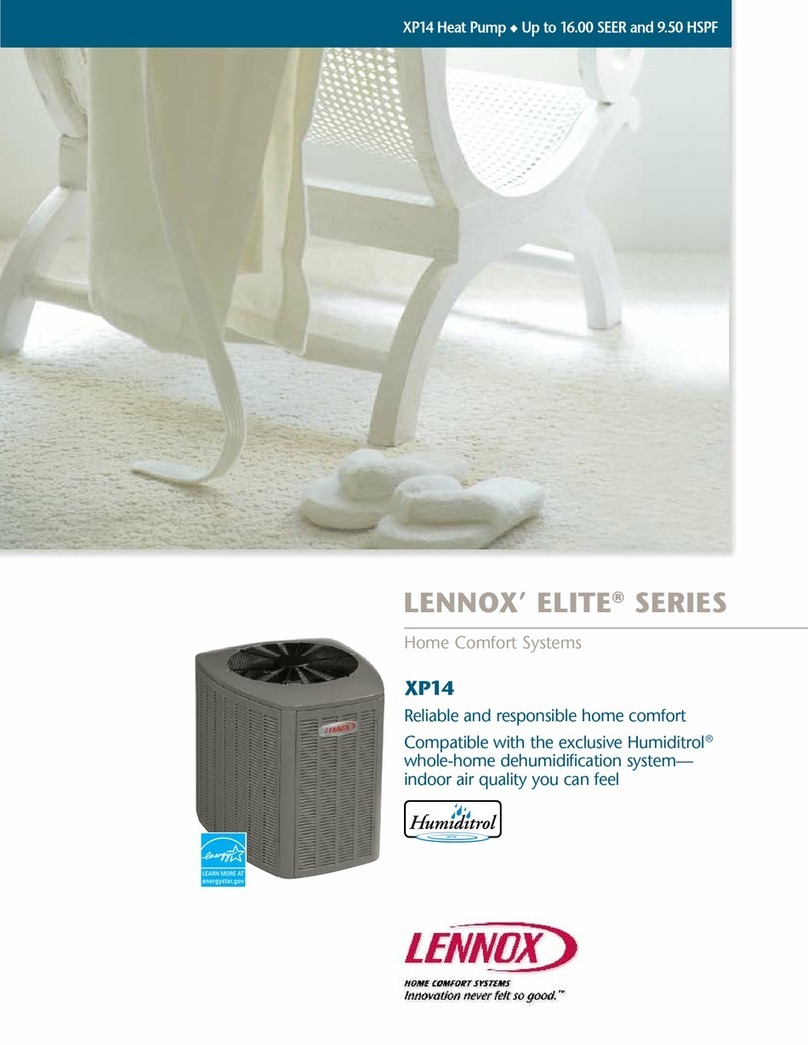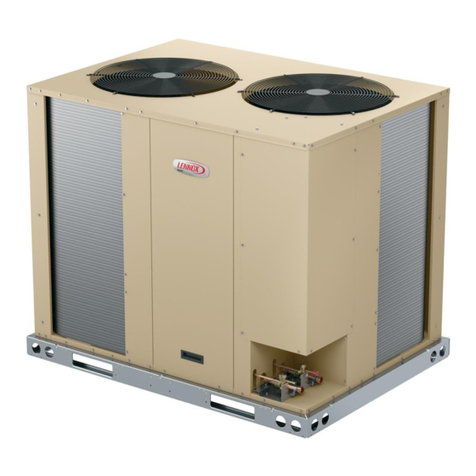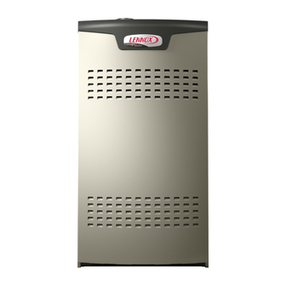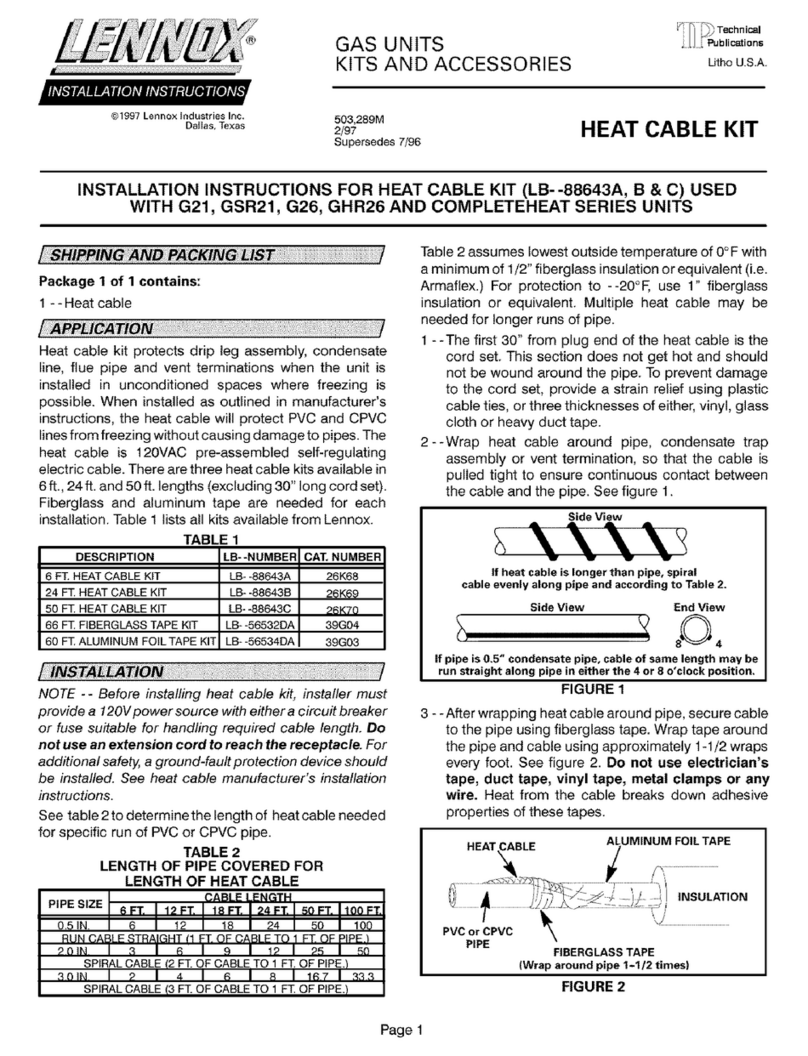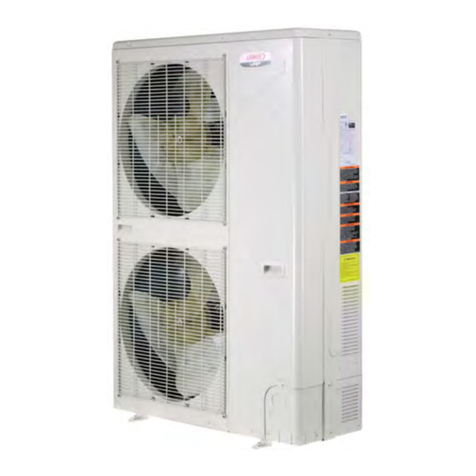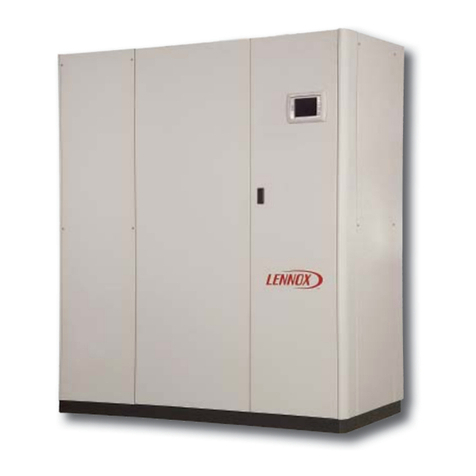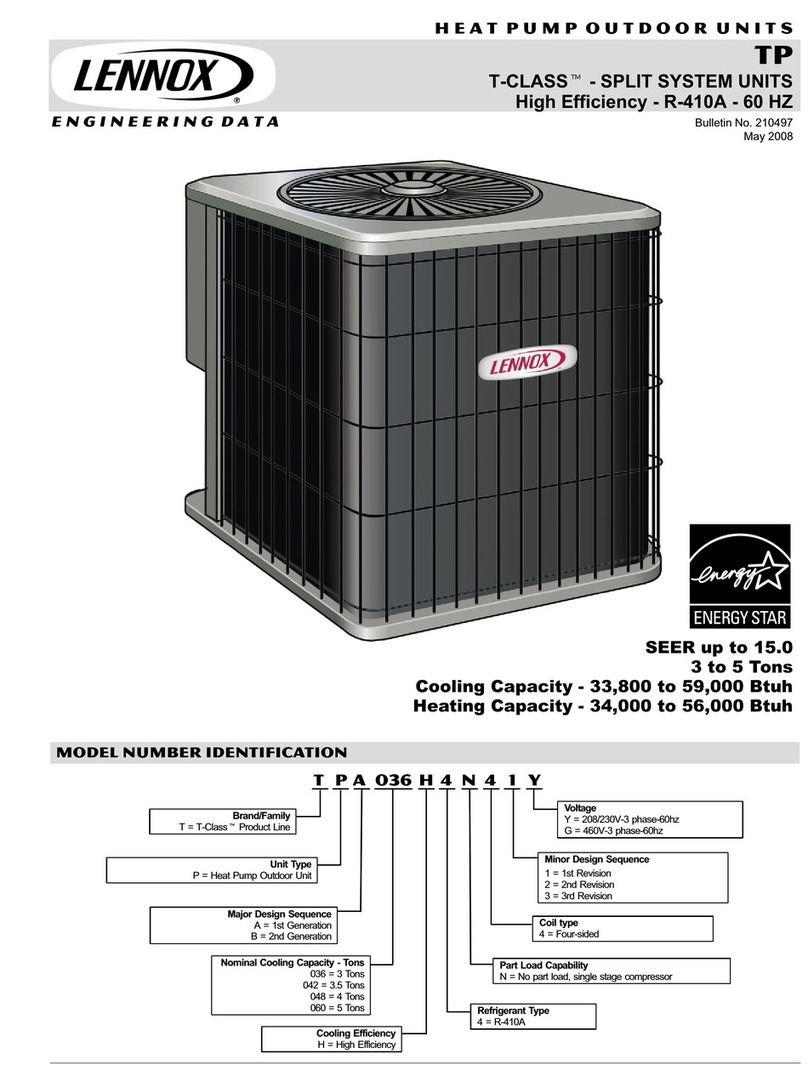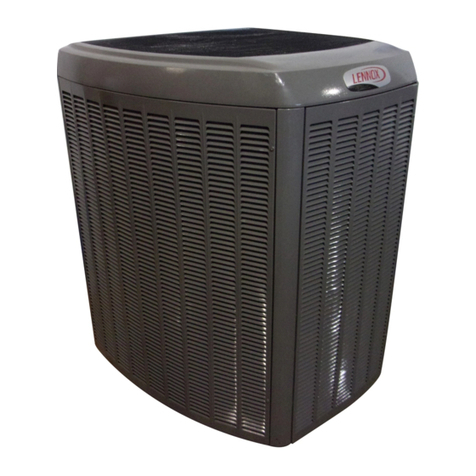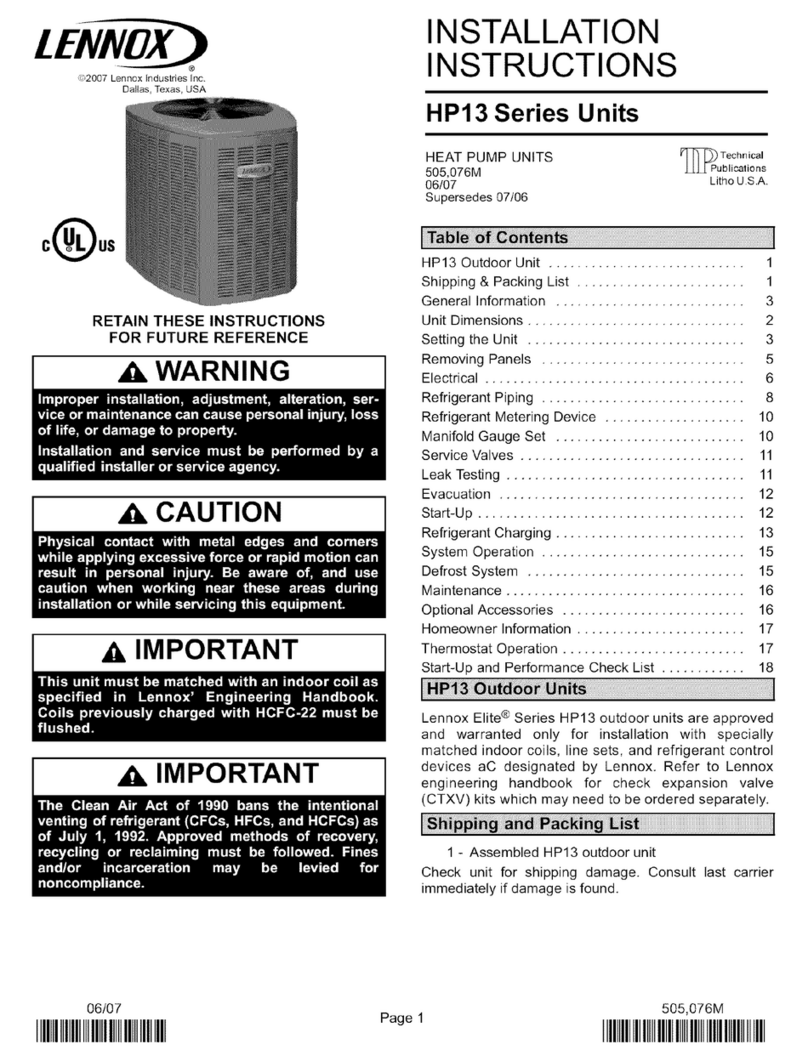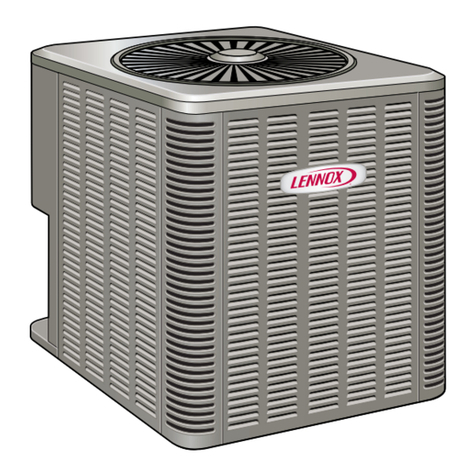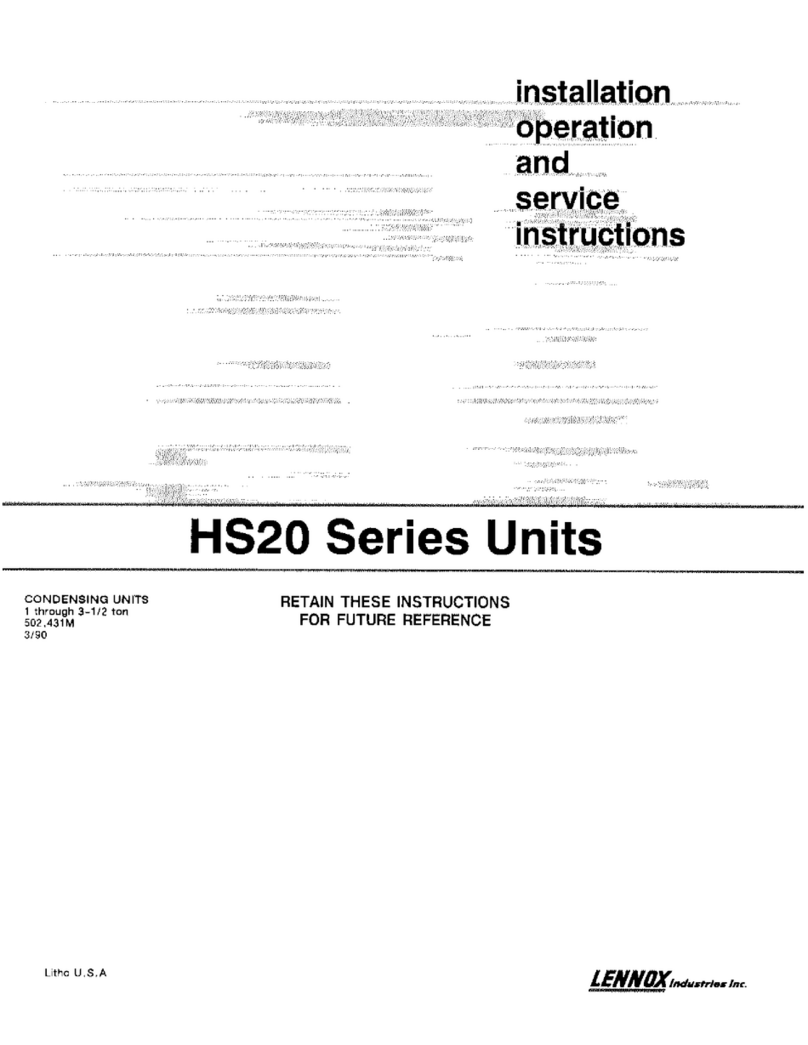Page 1
504,919M
*P504919M*
04/04
*2P0404*
©2004 Lennox Industries Inc.
Dallas, Texas
HSXA19 Outdoor Unit
Two−stage HSXA19 outdoor units use R410A which is an
ozone friendly HFC refrigerant. This unit must be installed
with a matching indoor coil and line set as outlined in the
Lennox Engineering Handbook. Dave Lennox Signature
Collection HSXA19 outdoor units are designed for use in ex-
pansion valve systems (TXV) only. They are not designed to
be used with other refrigerant flow control devices. The Len-
nox Engineering Handbook lists a TXV kit that must be or-
dered separately.
Shipping & Packing List
1 − Assembled HSXA19 outdoor unit
2 − Grommets (liquid and vapor line)
1 − Bushing (for low voltage wiring)
Check equipment for shipping damage. If you find any
damage, immediately contact the last carrier.
CAUTION
Danger of sharp metallic edges. Can cause injury.
Take care when servicing unit to avoid accidental
contact with sharp edges.
WARNING
Improper installation, adjustment, alteration, service
or maintenance can cause property damage, person-
al injury or loss of life. Installation and service must
be performed by a qualified installer or service
agency.
IMPORTANT
This unit must be matched with an indoor coil as
specified in Lennox’ Engineering Handbook. Coils
previously charged with HCFC−22 must be flushed.
INSTALLATION
INSTRUCTIONS
HSXA19 SERIES UNITS
CONDENSING UNITS
504,919M
04/04
Supersedes 03/04
Table of Contents
HSXA19 Outdoor Unit 1. . . . . . . . . . . . . . . . . . . . . . . . . .
Shipping & Packing List 1. . . . . . . . . . . . . . . . . . . . . . . . .
General Information 1. . . . . . . . . . . . . . . . . . . . . . . . . . . .
Unit Dimensions 2. . . . . . . . . . . . . . . . . . . . . . . . . . . . . . .
Parts Arrangement 3. . . . . . . . . . . . . . . . . . . . . . . . . . . . .
Setting The Unit 3. . . . . . . . . . . . . . . . . . . . . . . . . . . . . . . .
Electrical 4. . . . . . . . . . . . . . . . . . . . . . . . . . . . . . . . . . . . . .
Refrigerant Piping 7. . . . . . . . . . . . . . . . . . . . . . . . . . . . . .
Refrigerant Metering Device 11. . . . . . . . . . . . . . . . . . . .
Flushing Existing Line Set & Indoor Coil 11. . . . . . . . . .
Manifold Gauge Set 13. . . . . . . . . . . . . . . . . . . . . . . . . . .
Service Valves 14. . . . . . . . . . . . . . . . . . . . . . . . . . . . . . . .
Leak Testing 15. . . . . . . . . . . . . . . . . . . . . . . . . . . . . . . . . .
Evacuation 15. . . . . . . . . . . . . . . . . . . . . . . . . . . . . . . . . . .
Start−Up 16. . . . . . . . . . . . . . . . . . . . . . . . . . . . . . . . . . . . . .
Charging 16. . . . . . . . . . . . . . . . . . . . . . . . . . . . . . . . . . . . .
System Operation 21. . . . . . . . . . . . . . . . . . . . . . . . . . . . .
Maintenance 23. . . . . . . . . . . . . . . . . . . . . . . . . . . . . . . . . .
Optional Accessories 23. . . . . . . . . . . . . . . . . . . . . . . . . .
Homeowner Information 23. . . . . . . . . . . . . . . . . . . . . . . .
Check Points 24. . . . . . . . . . . . . . . . . . . . . . . . . . . . . . . . .
Retain These Instructions
For Future Reference
General Information
These instructions are intended as a general guide and do
not supersede local codes in any way. Consult authorities
who have jurisdiction before installation.
WARNING
This product and/or the indoor unit it is matched with
may contain fiberglass wool.
Disturbing the insulation during installation, mainte-
nance, or repair will expose you to fiberglass wool
dust. Breathing this may cause lung cancer. (Fiber-
glass wool is known to the State of California to
cause cancer.)
Fiberglass wool may also cause respiratory, skin,
and eye irritation.
To reduce exposure to this substance or for further
information, consult material safety data sheets
available from address shown below, or contact your
supervisor.
Lennox Industries Inc.
P.O. Box 799900
Dallas, TX 75379−9900
Litho U.S.A.
